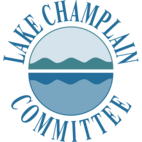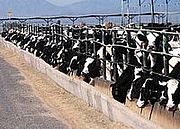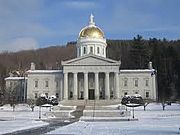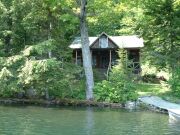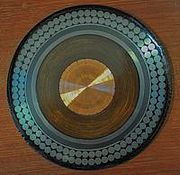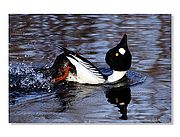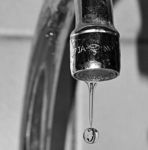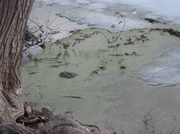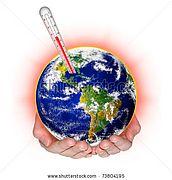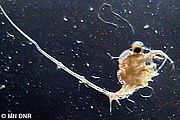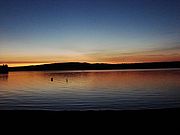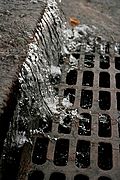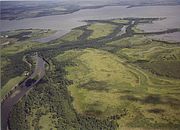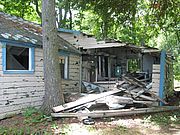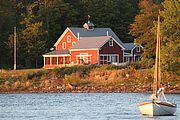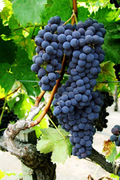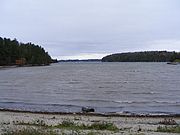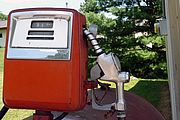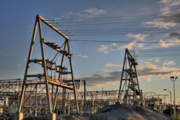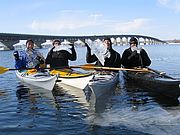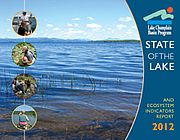The New York DEC is considering changes to its large farm rule (CAFO – concentrated animal feeding operation) so that it no longer applies to farms with between 200 and 299 cows. MORE Read...
News from Selected Month
LCC is part of a 32-member coalition of environmental groups, angler associations, and businesses who have signed a resolution urging public officials and elected leaders to make greater investments in protecting and restoring our waterways and water infrastructure. MORE Read...
The Vermont DEC has released the final version of a report on funding needs for clean water in Vermont. The legislature requested the report in Act 138 of the 2012 session. DEC estimates it will cost $156 million per year in order to achieve the state’s clean water goals. MORE Read...
On Wednesday January 30th renowned climate change activist Bill McKibben spoke from the well of the Vermont statehouse in Montpelier to rally legislators to the urgency of preventing further climate change. McKibben came at the invitation of House Speaker Shap Smith (D-Morristown). MORE Read...
On December 27, two New York State Public Service Commission (PSC) administrative law judges gave preliminary approval to a proposed project to lay a high voltage cable on the bottom of Lake Champlain in order to deliver electricity from hydro-generation facilities in Quebec to the New York City area. MORE Read...
Five people fell through three-inch thick ice in West Addison, Vermont earlier this month. Luckily they were all pulled to safety. The chart below provides some guidance on necessary ice thickness for various activities but there is no such thing as "safe ice". MORE Read...
While winter’s cold drives many birds away from our region, it also brings different species here. A day spent walking along the shores of Lake Champlain may reward you with rafts of hardy ducks at the edge of the ice. MORE Read...
Water conservation is something we may think about during the hot days of summer but what about winter? While we aren't watering lawns or gardens in the Champlain Valley there are still plenty of ways to cut back on water use during the chilly months. MORE Read...
We usually think of algae blooms as a summer phenomenon, but some species will occasionally bloom under the ice. Sunlight can still pass through ice allowing photosynthesis. MORE Read...
Earlier this year the Vermont Legislature asked the Agency of Natural Resources (VT ANR) to produce a report that did four things: examined funding options for water quality improvements, estimated the total state-wide need for such funding, suggested ways the funds could be administered, and identified priority needs for action. MORE Read...
The New York State Department of Environmental Conservation (NYS DEC) has issued draft regulations for fracking and is accepting public comments until January 11. In 2012 Vermont became the first state to ban fracking. LCC lobbied for the ban and is critical of New York’s decision to issue revised draft rules prior to the completion of a health study currently being conducted by the Commissioner of Health and before the release of an environmental impact statement begun in 2008. MORE Read...
As our climate warms, Lake Champlain changes. Already we have seen a decrease in winter ice cover and an increase in precipitation throughout the Basin. Where once the lake froze over almost every year, it has now been five years since the last freeze over. We already receive an additional three inches of precipitation per year with greater increases anticipated. MORE Read...
In August of this year, the spiny waterflea was found in Lake George, greatly increasing the possibility of its eventual arrival in Lake Champlain. Lake George has a direct connection to Lake Champlain via the LaChute River. Spiny waterfleas have also been found in the Champlain Canal which connects Lake Champlain to the Hudson River. MORE Read...
The Vermont Agency of Natural Resources (VT ANR) is on the verge of releasing a new map of biological resources in the state. This map goes well beyond what might appear on a flat piece of paper. VT ANRs’ BioFinder project will provide an important new tool for assessing the significance of Vermont lands and waters for conservation planning and education. MORE Read...
One of the great joys of living near Lake Champlain is the breath-taking sunrises or sunsets one can see over the water. Colors can range from a crisp red to a blend of pastel hues, from pink to baby blue, shifting even over the course of the event. Why is it that dawn and dusk lend such a visual explosion to the sky while mid-day colors range merely from blue through gray? MORE Read...
On December 5th, Vermont issued the second round of permits for municipal separate storm sewer systems (MS4). The first round was required under the Clean Water Act in 2003. The first round permit covered twelve Chittenden County communities, UVM, the state Agency of Transportation, and the Burlington International Airport. MORE Read...
The draft Missisquoi Bay Basin Water Quality Management Plan has been released for review. The plan lays out the current condition of the surface waters and aquatic habitat, water quality problems, and strategies to improve and restore water quality. MORE Read...
LCC’s work for a healthy, accessible lake depends upon the active involvement of many dedicated volunteers who lend heads, hands, and heart in a myriad of ways. As we close out 2012 the LCC Board of Directors and staff extend our thanks to everyone who has supported our efforts in the field, on the water and out in the community. MORE Read...
Wouldn’t it be nice to know at the beginning of the summer how bad blue-green algae blooms were going to be on Lake Champlain? Well, researchers from the National Oceanic and Atmospheric Administration’s National Center for Coastal Sciences (NCCOS) believe they have developed a model that can make such predictions for Lake Erie. In 2012 they issued their first seasonal harmful algae bloom forecast, predicting mild blooms during the summer. MORE Read...
Law Island is an 8.5 acre island close to the breakwater in Malletts Bay. A site on the Lake Champlain Paddlers’ Trail, it provides a secluded setting in a high traffic area of Lake Champlain with outstanding views of the lake and several islands. For years, five dilapidated buildings contaminated with lead and asbestos and several junk cars have marred its beauty and posed environmental and liability concerns. MORE Read...
Earlier this month the U.S. Environmental Protection Agency (EPA) launched a new app and website to help people find information on the condition of thousands of lakes, rivers and streams across the United States from their smart phone, tablet or desktop computer. MORE Read...
Members and friends gathered at “The Barnhouse” in historic Isle La Motte earlier this month for LCC’s 49th Annual Meeting. Attendees learned about current work, got a status report on lake health, conversed with other lake lovers, ate great food, and toured or paddled the area. MORE Read...
A new international wine trail was unveiled at Snow Farm Vineyards in South Hero, Vermont in late September. Linking many wineries extending from Middlebury, Vermont, to Plattsburgh, New York and to Dunham, Québec, the Champlain Valley International Wine Trail will provide information to casual travelers and wine aficionados alike. MORE Read...
Strong winds out of the north during Hurricane Sandy led to a decrease in lake level at Rouses Point and an increase at Whitehall as waters were pushed south. The difference amounted to about four inches. Following the storm, the lake leveled out again. The effect was less extreme than what was seen during Tropical Storm Irene when nearly a foot of water was displaced. MORE Read...
Members are the lifeblood of LCC. Annual membership helps fund our work to protect and restore water quality, safeguard natural habitats, provide access, and educate and engage people in stewarding this beautiful waterbody. Our deep thanks to LCC members who renewed their membership or joined during July through September 2012. MORE Read...
Two recent proposals have shown that Lake Champlain is likely to be in the center of our region’s future energy transmission network. One project proposes to lay a power line at the bottom of Lake Champlain to transmit energy from large hydro-electric dams in northern Quebec to power-hungry consumers in the New York City region. MORE Read...
Join veteran kayaking instructor and Kokatat representative Suzanne Hutchinson for a cold water immersion clinic. The day-long program includes both inside instruction about the dangers of cold water paddling and how to prepare along with an outdoor portion on the water. Participants will learn about appropriate dress and skills for paddling in cold conditions. MORE Read...
Come join Lake Champlain Committee (LCC) board, staff and friends at the “Barnhouse" amongst the fields, farms, forests, and fossils of historic Isle La Motte, Vermont for LCC's 49th Annual Meeting. Learn about LCC’s work, get a status report on lake health, converse with other lake lovers, eat great food all in a beautiful lakeside setting courtesy of the Turner Dale families. MORE Read...
How is Lake Champlain doing? The Lake Champlain Basin Program released a new State of the Lake report this summer that helps answer that question. The State of the Lake comes out every three to four years to report on progress meeting water protection and restoration goals, track changes in the lake’s condition, and answer frequently asked questions. MORE Read...
The spiny waterflea, an invasive plankton species, was found in Lake George in early August. The species was found from at least four different locations in the lake in both the South Basin and in northern stretches. Now they have a direct connection to Lake Champlain from Lake George via the LaChute River. MORE Read...
